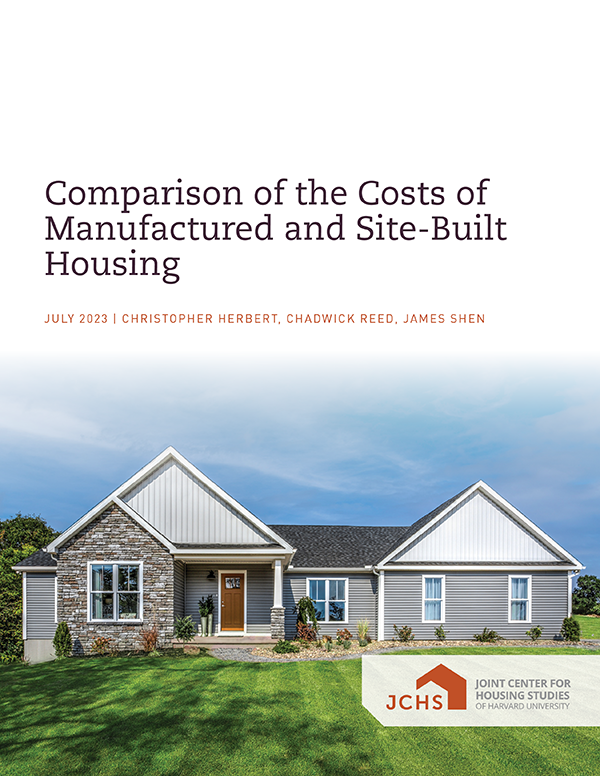Comparison of the Costs of Manufactured and Site-Built Housing
Manufactured housing holds promise as an affordable form of housing that could expand homeownership opportunities for low- and moderate-income households at a time when house value growth is outpacing income gains in markets across the country. Simple comparisons of the cost of manufactured housing to site-built housing find that manufactured housing offers significant cost advantages, derived in large part from greater efficiencies in purchasing, production, and installation. However, recent comparisons are relatively simplistic, comparing the average cost of homes built without considering differences in size, amenities, or the costs of transporting and siting manufactured homes. The goal of this study is to document the cost of comparable site-built and manufactured homes such that these differences are accounted for. To achieve this, we analyze three common types of manufactured homes: single-section, double-section, and CrossModTM. While single- and double-section (known colloquially as “single-wide” or “double-wide”) homes have long been staples of the manufactured housing industry, CrossModTM is a relatively new type of home developed by the industry to make manufactured homes more comparable to site-built homes in their physical appearance, thus broadening consumer appeal, appraised value, and financing opportunities, and reducing community opposition to the siting of these homes. The results of our analysis find that all three types of manufactured homes continue to offer significant cost advantages over site-built housing. These findings suggest that efforts to expand access to manufactured homes hold the potential to increase homeownership opportunities for low- and moderate-income households.
Funding for this research was provided by the Pew Charitable Trusts.

